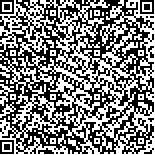| 摘要: |
| [摘要] 目的 对9~13岁儿童屈光参差性弱视应用基于互联网的视知觉学习系统训练,了解、分析其训练前后的对比敏感度(CS)的变化。方法 屈光参差性弱视患儿216例(216眼),应用基于互联网的视知觉学习系统和传统综合训练方法对入选弱视儿童进行训练,训练方案由医师基于患儿的初始视力、视功能低下的严重程度以及训练治疗过程中的进步来设计。视知觉学习组给予提高视觉噪声和轮廓整合、位置噪声的训练方案。传统综合疗法组采取红光、精细目力训练等训练方案。分析两种方法在训练前,训练后3个月、6个月、9个月、12个月的对比敏感度变化。结果 视知觉学习组与传统综合疗法组弱视眼CS均数在各空间频率均降低,视知觉学习组与传统综合疗法组治疗前3~18 c/d全频率差异无统计学意义(P>0.05),视知觉学习组及传统综合疗法组3~18 c/d全频率的治疗组间、5个时点及不同组别和时点的交互作用比较差异均有统计学意义(P<0.01)。两组3~18 c/d全频率的治疗后各时点较治疗前提升,差异有统计学意义(P<0.05)。两组间3~18 c/d全频率的治疗后各时点比较,视知觉学习组优于传统综合疗法组,差异有统计学意义(P<0.01)。结论 视知觉学习系统提供了强烈的、有反馈的个性化视觉刺激任务,对于超过视觉发育敏感期的大龄屈光参差性儿童弱视的对比敏感度疗效优于传统综合疗法,为弱视的临床治疗提供了新的可选方案。 |
| 关键词: 对比敏感度 屈光参差性弱视 视知觉学习 |
| DOI:10.3969/j.issn.1674-3806.2015.01.03 |
| 分类号:R 777.4 |
| 基金项目:广西自然科学基金资助项目(编号:2010GXNSFB013082) |
|
| The clinical study of perceptual learning based on the internet on juvenile aged 9~13 with anisometropic amblyopia contrast sensitivity |
|
LIN Quan, LIU Wei-Min, XIAO Xin, et al.
|
|
Department of Visual Science and Optometry, the People′s Hospital of Guangxi Zhuang Autonomous Region, Nanning 530021, China
|
| Abstract: |
| [Abstract] Objective To apply systematic training of the perceptual learning based on internet for juvenile anisometropic amblyopia, understand and analyze the change in contrast sensitivity before and after the training.Methods Two hundred and sixteen juvenile patients(216 eyes) with anisometropic amblyopia were chosen and trained with the perceptual learning system based on internet and the traditional combined training.The specific training programs were designed by doctor based on the patient initial vision, degree of severity in low vision and advancement during training process.The perceptual learning group received the visual trainings,such as improving visual noise,contour integration and position noise; the traditional combined training group received the visual trainings like red lights and fine vision training.Based on these two methods, the change in contrast sensitivity was analyzed before and after 3 months, 6 months, 9 months and 12 months′ training.Results The CS Means of amblyopia from the perceptual learning group and the traditional combined training group decreased in each spatial frequency. The entire 3~18 c/d frequency difference had no statistical significance between two groups before treatment(P>0.05). After the treatment, the entire CS(3~18 c/d) frequency difference in the perceptual learning group was higher than that in the traditional combined training group. The difference was statistically significant(P<0.05). After the treatment, the entire 3~18 c/d frequency difference in the traditional combined training group was improved significantly(P<0.01).Conclusion The perceptual learning based on internet can provide intensive,active,feedback and individual visual stimulus, thus being more effective than the traditional combined treatment for anisometropic amblyopia juvenile aged 9~13 who are out of vision sensitive developmental period. The new treatment can achieve better result in promoting the contrast sensitivity than the traditional combined treatment, thus providing a new feasible way for amblyopia clinical therapy. |
| Key words: Contrast sensitivity Anisometropic amblyopia Perceptual learning |

